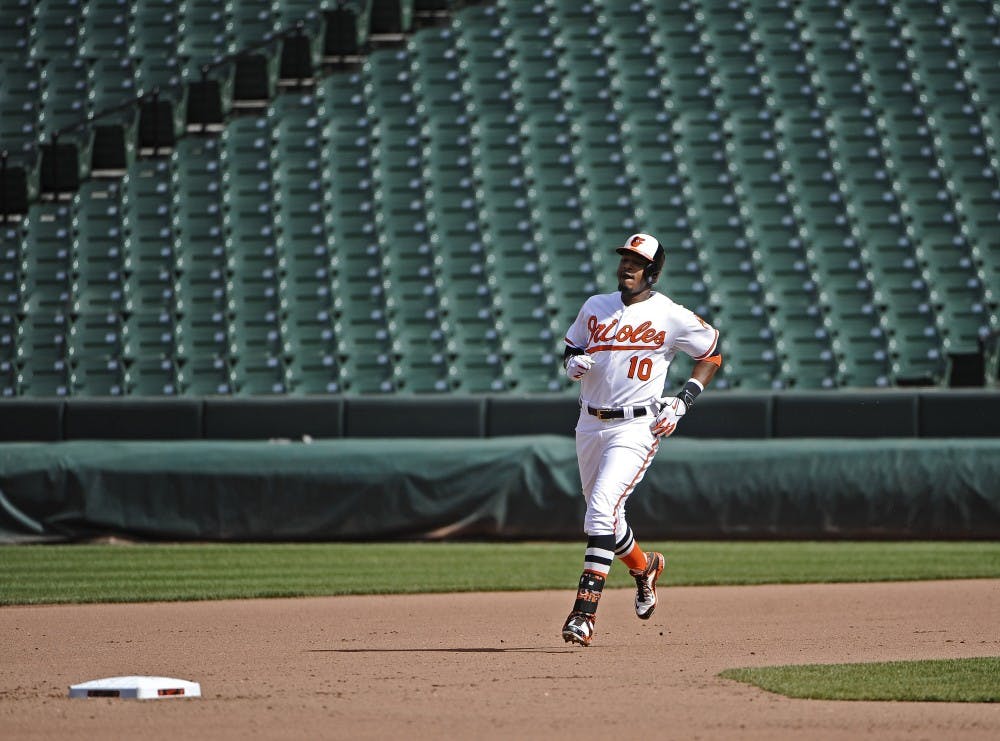As a child, I fell in love with the game of baseball. I participated in my city's recreation league every year, forced friends and family to play catch at every opportunity and followed MLB religiously. Living in Virginia before the Nationals moved to DC meant that the Orioles were my home, and therefore favorite, team. In the years since then, I've watched them win hundreds of games, and lose even more (they wouldn't break their streak of 14 straight losing seasons until 2012). I was crushed when All-Star shortstop Miguel Tejada was traded to the Astros, exhilarated when I was in the stands for Delmon Young's bases clearing double to give us the game-winning lead against the Tigers in last year's postseason and mortified when I watched us play the first game barred to fans in MLB history during the height of the Freddie Gray protests.
Orioles Park at Camden Yards was the first of a new generation of sports stadiums, designed specifically for a single sport and built in the heart of their cities. Most stadiums at the time were designed to be multipurpose for multiple sports. The stadium the Orioles were moving out of, for example, was used by both the Orioles and the NFL's Colts, before they moved from Baltimore. When construction began in 1987 the $110 million project (or $230 million in today's dollars, after adjusting for inflation) was funded entirely by the State of Maryland, after politicians billed it as a way to re-energize a blighted Baltimore downtown by bringing new jobs and tax revenues.
Twenty years later and the Baltimore's inner harbor has still not seen the growth and restoration, though the riots certainly are showing that they've at least got energy — which brings us back to the game that was shut to the general public to prevent riots from spilling into the stadium. The irony of a bunch of millionaires playing a game in a stadium paid for by everyday taxpayers while those same taxpayers were barred from entry because of their protests against unfair treatment was too much for me; it was the first game in more than a decade of fandom that I chose to stop watching before it ended.
Modern rhetoric about "class warfare" tends to center on bashing Republicans for granting massive tax breaks to huge companies or the very well off individuals who run them. Baltimore, which has been run exclusively by Democrats since the 1960s, should remind us that making the rich richer at the expense of the rest of us is a bipartisan position. Perhaps even more importantly, it should teach us that even the most well intentioned government programs are not a panacea for the ills of income inequality — in fact, they are often the cause.

